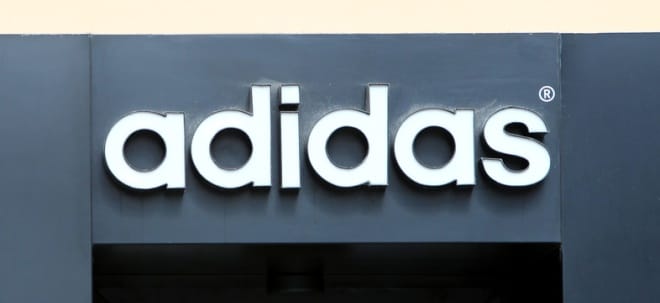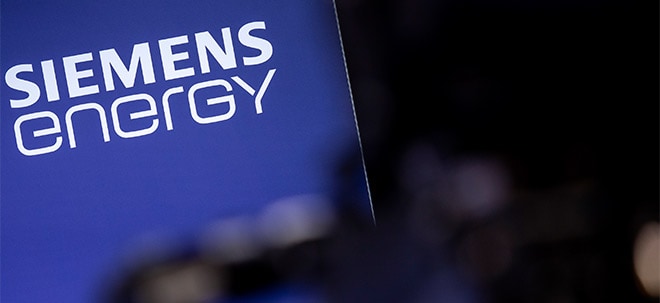Carvana vs. CarMax: Which Used Car Stock Has More Fuel for Growth?
Werte in diesem Artikel
To boost domestic production, U.S. President Trump is imposing 25% tariffs on imported cars and key auto parts, including engines, powertrains, and transmissions. These tariffs, set to take effect tomorrow, are expected to disrupt the auto industry, strain supply chains and lift vehicle prices — creating affordability challenges that could weaken demand.With new car prices rising, more buyers may shift to the used car market, further widening the price gap between new and used vehicles. Initially, the used car industry might benefit from a surge in demand before potential price increases follow. Against this backdrop, let's see if either of these used vehicle retailers — CarMax KMX or Carvana CVNA — is a buy now.The Case for CarMaxCarMax is the largest used vehicle retailer in the United States but its sales figures aren’t that impressive. In fiscal 2024 (ended Feb. 28, 2024), CarMax retailed 765,572 used vehicles, down more than 5% year over year. In the first three quarters of fiscal 2025, the company sold 606,395 units, with revenues declining to $20.3 billion from $20.9 billion in the prior-year period. However, retail used vehicle gross margin has improved a bit, which expanded 50 basis points year over year to 8.7% in the last reported quarter. KMX will report fiscal fourth-quarter 2025 results next Thursday.The company has some growth drivers in place. CarMax is investing in strategic initiatives to enhance operations. It plans to open more offsite reconditioning and auction locations, thus improving its logistical efficiency. The company’s online appraisal tool has been a game-changer, contributing to double-digit growth in web traffic. Additionally, its MaxOffer program, which provides instant digital offers, could boost vehicle acquisition and wholesale sales over time.CarMax also rewards investors through share repurchases. In the first three quarters of fiscal 2025, the company repurchased 4.3 million shares, including $114.8 million worth of shares in the third quarter of fiscal 2025. At the end of the last reported quarter, it had $2.04 billion left under its buyback authorization, reflecting strong capital return policies.However, CarMax’s financial health raises concerns. Its cash position of $271.9 million is overshadowed by $1.59 billion in long-term debt, resulting in a debt-to-capital ratio of 0.75 —well above the auto sector's average of 0.34. As highlighted above, sales growth remains sluggish, prompting the company to push back its 2 million-unit sales target from 2026 to as late as 2030. Additionally, its overall gross margin of 10.5% lags far behind the industry average of 28%.Macroeconomic risks add another layer of uncertainty. A potential recession could weaken demand as affordability pressure weighs on consumers. CarMax’s financing arm (“CAF”) may also experience stress and there could be a rise in delinquencies. As new vehicle prices are set to rise amid tariffs, KMX’s comps are expected to improve. However, credit losses could offset potential gains from higher used vehicle sales in an uncertain economic environment.The Case for CarvanaCarvana is currently the second-largest used car retailer in the United States. Its end-to-end online business model is more asset light compared to traditional used-car retailers like CarMax. Retail sales volumes have been on the rise, with CVNA selling more than 100,000 cars in each of the last three reported quarters. In the final quarter of 2024, retail units sold jumped 50% year over year. Carvana expects continued sequential growth in the first quarter of 2025 and significant expansion throughout the year.CVNA’s three-step plan — achieving positive adjusted EBITDA, increasing EBITDA per unit, and returning to growth with a leaner operating model — has been delivering results. In 2024, the company posted record adjusted EBITDA of $1.4 billion, with an industry-leading 10.1% adjusted EBITDA margin. Management anticipates further gains in 2025, supported by cost efficiencies and operational improvements.The company has significantly reduced costs related to retail reconditioning and inbound transport by in-sourcing services, optimizing staffing and improving logistics. These initiatives have expanded its retail gross profit per unit (GPU), while additional revenue streams from value-added services provide further upside.Additionally, Carvana’s acquisition of ADESA’s U.S. operations has enhanced its logistics, auction capabilities and reconditioning processes. The integration of ADESA's infrastructure has increased Carvana’s reconditioning capacity from 1.3 million to a potential 3 million units annually. This should support vehicle quality, inventory turnover and profitability.Despite its progress, Carvana's balance sheet remains a concern. While a debt restructuring deal in September 2023 provided temporary relief, the company still carries $5.26 billion in long-term debt against $1.72 billion in cash as of Dec. 31, 2024. Its debt-to-capital ratio of 0.8 is notably high, posing financial risks.Price Performance and Valuation of CVNA & KMXYear to date, Carvana shares have risen more than 4%, while KMX stock has lost 3.5%. Image Source: Zacks Investment ResearchCarvana is trading at a forward sales multiple of 2.54X, way above its median of 0.69X, over the last three years. KMX’s forward sales multiple sits at 0.45X, slightly above its median of 0.43X over the last three years. Image Source: Zacks Investment ResearchCarvana does seem pricey. But its valuations also reflect its high growth expectations and improving profitability. If the company sustains its execution, the premium could be warranted.How Do Estimates Compare for Carvana & CarMax?The Zacks Consensus Estimate for CVNA’s 2025 sales and EPS implies year-over-year growth of 23% and 119%, respectively. The EPS estimates for 2025 and 2026 have been trending northward over the past 60 days. Image Source: Zacks Investment ResearchThe Zacks Consensus Estimate for KMX’s fiscal 2026 sales and EPS implies a year-over-year increase of 3.4% and 17%, respectively. While the estimates for KMX’s fiscal 2025 EPS rose by a cent over the past 60 days, the same for fiscal 2026 declined by a cent in the same timeframe. Image Source: Zacks Investment ResearchConclusionWhile both companies are set to benefit from a rising preference for used cars, Carvana’s growth trajectory is far more compelling. It is growing at a faster pace, with strong sales momentum and improving profitability. The company’s focus on cost efficiencies, logistics and reconditioning has strengthened its operations. Its strategic moves, including the ADESA acquisition, position it well for further expansion. Meanwhile, CarMax’s sales growth has been sluggish, and financial concerns linger. While it is making efforts to improve operational efficiency, the pace of progress is much slower compared to Carvana.Despite Carvana’s premium valuation, its superior growth, expanding margins, stronger sales momentum and solid estimate revisions make it the better choice for investors seeking handsome returns.While CVNA carries a Zacks Rank #2 (Buy), KMX is #3 Ranked (Hold).You can see the complete list of today’s Zacks #1 Rank (Strong Buy) stocks here5 Stocks Set to DoubleEach was handpicked by a Zacks expert as the #1 favorite stock to gain +100% or more in 2024. While not all picks can be winners, previous recommendations have soared +143.0%, +175.9%, +498.3% and +673.0%.Most of the stocks in this report are flying under Wall Street radar, which provides a great opportunity to get in on the ground floor.Today, See These 5 Potential Home Runs >>Want the latest recommendations from Zacks Investment Research? Today, you can download 7 Best Stocks for the Next 30 Days. Click to get this free report CarMax, Inc. (KMX): Free Stock Analysis Report Carvana Co. (CVNA): Free Stock Analysis ReportThis article originally published on Zacks Investment Research (zacks.com).Zacks Investment ResearchWeiter zum vollständigen Artikel bei Zacks
Übrigens: CarMax und andere US-Aktien sind bei finanzen.net ZERO sogar bis 23 Uhr handelbar (ohne Ordergebühren, zzgl. Spreads). Jetzt kostenlos Depot eröffnen und als Geschenk eine Gratisaktie erhalten.
Ausgewählte Hebelprodukte auf CAR
Mit Knock-outs können spekulative Anleger überproportional an Kursbewegungen partizipieren. Wählen Sie einfach den gewünschten Hebel und wir zeigen Ihnen passende Open-End Produkte auf CAR
Der Hebel muss zwischen 2 und 20 liegen
| Name | Hebel | KO | Emittent |
|---|
| Name | Hebel | KO | Emittent |
|---|
Quelle: Zacks
Nachrichten zu Carvana Co Registered Shs -A-
Analysen zu Carvana Co Registered Shs -A-
| Datum | Rating | Analyst | |
|---|---|---|---|
| 08.08.2019 | Carvana Outperform | Cowen and Company, LLC | |
| 08.08.2019 | Carvana Market Perform | BMO Capital Markets | |
| 20.05.2019 | Carvana Outperform | Cowen and Company, LLC | |
| 29.04.2019 | Carvana Buy | B. Riley FBR | |
| 13.02.2019 | Carvana Neutral | Seaport Global Securities |
| Datum | Rating | Analyst | |
|---|---|---|---|
| 08.08.2019 | Carvana Outperform | Cowen and Company, LLC | |
| 08.08.2019 | Carvana Market Perform | BMO Capital Markets | |
| 20.05.2019 | Carvana Outperform | Cowen and Company, LLC | |
| 29.04.2019 | Carvana Buy | B. Riley FBR | |
| 02.10.2018 | Carvana Outperform | Wolfe Research |
| Datum | Rating | Analyst | |
|---|---|---|---|
| 13.02.2019 | Carvana Neutral | Seaport Global Securities | |
| 08.12.2017 | Carvana Hold | Deutsche Bank AG | |
| 27.10.2017 | Carvana Mkt Perform | Barrington Research | |
| 18.07.2017 | Carvana Neutral | Wedbush Morgan Securities Inc. |
| Datum | Rating | Analyst | |
|---|---|---|---|
Keine Analysen im Zeitraum eines Jahres in dieser Kategorie verfügbar. Eventuell finden Sie Nachrichten die älter als ein Jahr sind im Archiv | |||
Um die Übersicht zu verbessern, haben Sie die Möglichkeit, die Analysen für Carvana Co Registered Shs -A- nach folgenden Kriterien zu filtern.
Alle: Alle Empfehlungen

